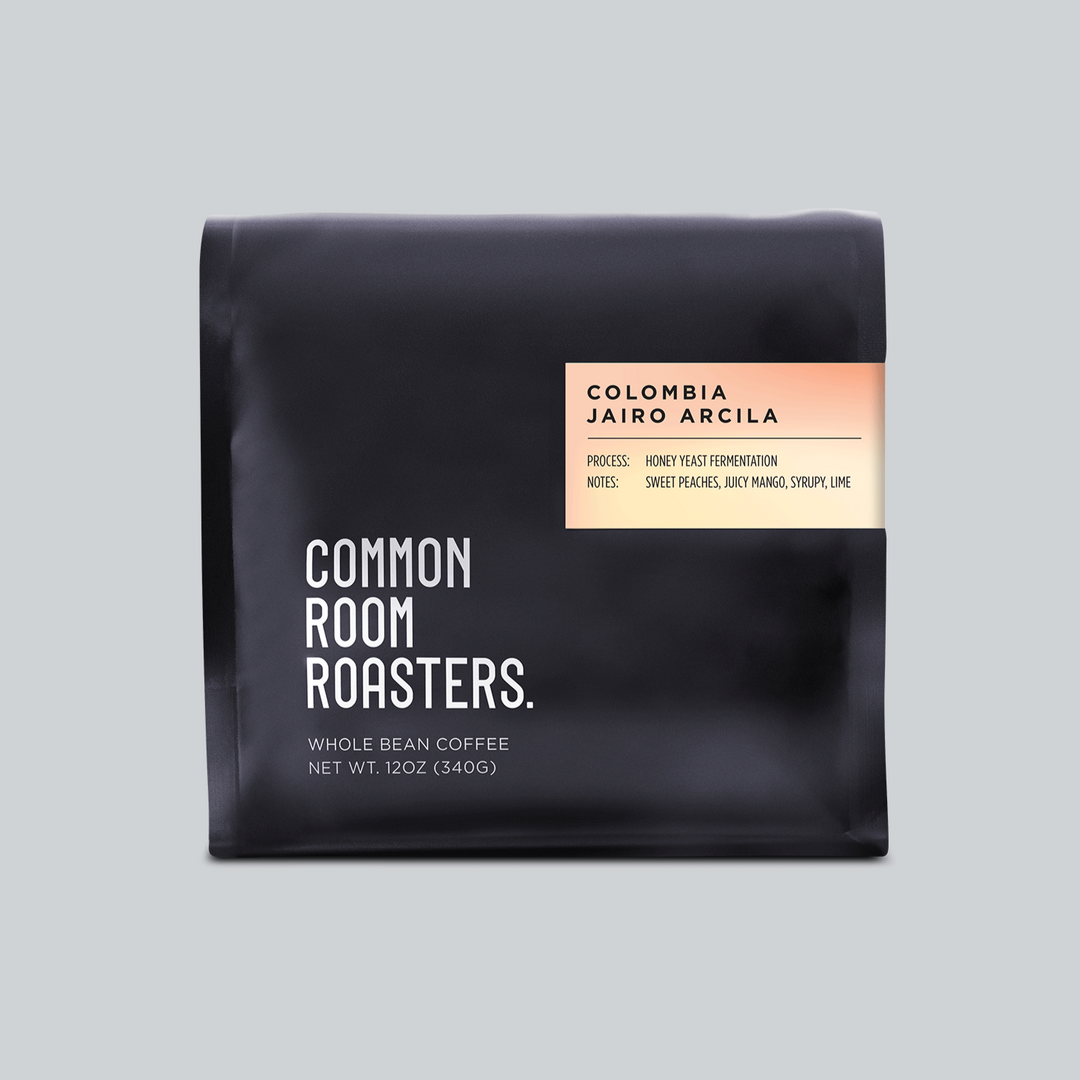Origin of the Flavor Profile: Tasting Notes in Coffee

Coffee is comprised of many complex flavors, from bright and fruity, delicate and floral, to chocolatey and nutty. These tasting notes are the result of a fascinating journey from the coffee plant to your cup, influenced by factors such as terroir, varietals, and processing methods.
Understanding where these flavors come from and how to select the right flavor profile for different brew methods can enhance your coffee experience.
In this post, we'll explore the origins of coffee's flavor profile and provide tips on choosing the best beans for various brewing techniques.
The Influence of Terroir on Coffee Flavor
Climate
The climate where coffee is grown significantly affects its flavor profile. Key climatic factors include temperature, rainfall, and humidity.
- High Altitudes: Coffee grown at higher altitudes, such as in the Ethiopian highlands or Colombian mountains, tends to develop more complex sugars due to slower maturation. This slow growth process results in beans with higher acidity and pronounced fruity and floral notes. The cooler temperatures at high altitudes contribute to these brighter flavors.
- Low Altitudes: In contrast, coffee grown at lower altitudes, like in Brazil, matures faster due to warmer temperatures. This quicker growth typically results in beans with lower acidity and a smoother, fuller body, often characterized by nutty, chocolatey, and earthy flavors.
Soil Composition
Soil composition is another critical factor influencing coffee flavor. The minerals and nutrients present in the soil where coffee plants grow can enhance specific flavor characteristics.
- Volcanic Soils: Regions with volcanic soils, such as those in Guatemala and Costa Rica, are known for producing coffee with vibrant acidity and rich, complex flavors. The high mineral content of volcanic soil contributes to the beans' distinct taste profiles.
- Organic Matter: The presence of organic matter in the soil can also affect coffee flavor. Soils rich in organic content tend to produce beans with more robust and well-rounded flavors.
Geography
Geographical features, such as proximity to mountains, bodies of water, and the equator, create unique microclimates that impact coffee cultivation.
- Mountains and Valleys: In regions like the Yirgacheffe region of Ethiopia, the combination of high altitude and unique geographical features produces coffees with distinctive floral and citrus notes.
- Equatorial Regions: Coffee grown near the equator benefits from consistent weather patterns, which can lead to more stable and predictable flavor profiles. The Role of Coffee Varietals
Genetic Diversity
Coffee varietals, which are genetic subspecies of the coffee plant, bring inherent flavor characteristics that influence the final taste of the coffee.
- Gesha: This varietal, originating from Ethiopia, is renowned for its delicate floral, jasmine, and bergamot notes, coupled with bright acidity and a tea-like body.
- Bourbon: Known for its sweetness, full body, and complex fruit flavors, Bourbon is a popular varietal in Central America.
- SL28 and SL34: These Kenyan varietals are famous for their bright acidity, juicy body, and intense berry and citrus notes.
Selective Breeding
Selective breeding practices aim to develop coffee varietals that combine desirable flavor traits with resistance to diseases and pests.
- Hybrid Varietals: Farmers and researchers often crossbreed different coffee plants to create hybrids that offer unique flavor profiles while being more resilient. For instance, the development of hybrids like Catimor and Sarchimor aims to enhance both flavor and plant health.
The Impact of Processing Methods
Washed Process
The washed process, or wet process, involves removing the outer fruit layer of the coffee cherry before drying the beans. This method is known for producing clean, bright, and consistent flavors.
- Flavor Profile: Washed coffees often exhibit higher acidity and more pronounced fruit and floral notes. For example, washed Ethiopian coffees are celebrated for their vibrant citrus and floral flavors, while washed Central American coffees often feature crisp apple and pear notes.
Natural Process
The natural process, or dry process, involves drying the coffee cherries with the fruit still attached to the beans. This method enhances the bean’s sweetness and fruitiness, often resulting in a fuller body and more complex, wine-like flavors.
- Flavor Profile: Natural processed coffees from regions like Ethiopia and Brazil frequently exhibit intense berry, tropical fruit, and even fermented notes, creating a rich and robust flavor profile.
Honey Process
The honey process is a hybrid method where some of the fruit pulp remains on the beans during drying, creating a sticky, honey-like mucilage. The amount of mucilage left can vary, leading to different flavor outcomes.
- Flavor Profile: Honey-processed coffees balance the bright acidity of washed coffees with the sweetness and fuller body of natural coffees. They often have complex, layered flavors with both fruity and caramel-like notes.
Fermentation and Drying
Fermentation and drying processes also influence coffee flavor. After the initial processing, beans undergo fermentation to break down remaining mucilage. The duration and conditions of fermentation can add unique flavors.
- Controlled Fermentation: By carefully controlling fermentation time and environment, producers can enhance desirable flavors such as fruity, floral, or even spicy notes.
- Drying Methods: The way coffee beans are dried, whether on raised beds, patios, or in mechanical dryers, affects moisture content and can influence flavor stability and sweetness.
Selecting the Right Flavor Profile for Different Brew Methods
1. Espresso
Espresso brewing methods require beans that can withstand high pressure and deliver a concentrated, rich flavor. Look for:
- Medium Roasts: These roasts maintain a balance between acidity and body, allowing for a well-rounded espresso shot.
- Flavor Profiles: Fruity, chocolatey, and nutty notes work well, providing complexity and depth to your espresso.
2. Pour Over
Pour-over methods like Chemex and Hario V60 emphasize clarity and highlight subtle flavor nuances. Opt for:
- Light to Medium Roasts: These roasts preserve the bean’s original flavors and highlight acidity and brightness.
- Flavor Profiles: Floral, fruity, and citrusy notes shine in pour-over brews, offering a refreshing and vibrant cup.
3. French Press
The French press method produces a full-bodied cup with rich, complex flavors. Choose:
- Medium Roasts: These roasts offer a balance between body and acidity, creating a satisfying French press brew.
- Flavor Profiles: Earthy, chocolatey, and nutty flavors complement the robust character of French press coffee, delivering a rich and comforting experience.
4. Cold Brew
Cold brew requires beans that can create a smooth, low-acidity brew. Look for:
- Medium Roasts: These roasts provide a balanced flavor profile, resulting in a smooth and mellow cold brew.
- Flavor Profiles: Sweet, chocolatey, and nutty notes are ideal, offering a rich and indulgent cold brew experience.
5. Aeropress
The Aeropress is versatile and can be adjusted to suit a range of flavor profiles. However, it typically benefits from:
- Medium Roasts: These roasts offer versatility and balance, allowing you to experiment with various brewing techniques.
- Flavor Profiles: Balanced and nuanced flavors, such
In conclusion, the nuanced flavors found in coffee are a testament to the intricate interplay of terroir, varietals, and processing methods. By delving into the origins of these flavor profiles and selecting beans tailored to our preferred brewing methods, we deepen our appreciation for the artistry and science behind every cup.
With each sip, we embark on a sensory journey that not only delights the palate but also connects us to coffee culture, from the fields where it's grown to the communities that cherish it.

















